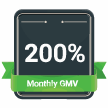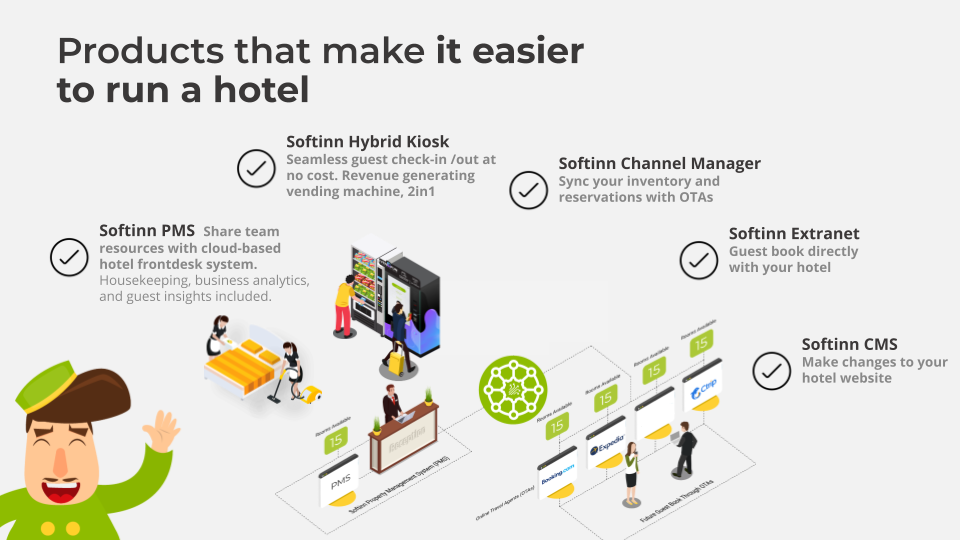Google Maps is an essential tool for travellers searching for accommodation, and ranking higher can significantly improve your hotel’s visibility. Whether guests are searching for hotels near their location or planning a future trip, you want your hotel to be the top choice. In this guide, we will walk you through actionable steps you can take to ensure your hotel ranks higher on Google Maps so it can be easily found by potential guests at the right time. Check this out.
Step 1: Claim and Verify Your Google Business Profile
The foundation of ranking well on Google Maps begins with Google Business Profile. If you have not claimed your listing yet, you are missing out on one of the most powerful free tools for improving your hotel’s visibility.
How to Claim Your Google Business Listing:
- Search for your hotel on Google Maps. If a listing already exists, it might be unclaimed.
- Click on “Own this business?” to start the claiming process.
- Verify your business: Google will send a postcard with a code to your hotel’s address. Enter the code to verify your listing.
If you manage a hotel named “Kuromie Resort” in Pulau Pangkor, search for it on Google Maps. If a listing appears but isn’t managed by you, claim it to start optimizing. If no listing exists, create a new one via the Google My Business website. There is a step-by-step guide here on how to create a new business listing and claim it on Google.
Step 2: Complete and Optimize Your Business Profile
Having a verified listing is only the first step. The next step is to fully complete your business profile to ensure it stands out to both Google and potential guests.
Key Information to Include:
- Business Name, Address, and Phone Number (NAP): Ensure this information is consistent across all platforms (website, directories, etc.).
- Category: Choose the most relevant category like “Hotel,” "Resort”, "Villa" or "Glamping"
- Description: Write a brief, engaging description of your hotel, naturally incorporating relevant keywords (e.g., “best and unique accommodation in Pulau Pangkor”).
- Amenities: Include details about amenities such as free breakfast, Wi-Fi, swimming pool, activities, and parking.
Step 3: Add High-Quality Photos
Photos play a huge role in attracting potential guests and improving your ranking. Listings with quality visuals perform better because they help users visualize their experience, increasing the chances of engagement and booking.
What Photos to Include:
- Rooms: Showcase the different types of rooms available, highlighting special features like balconies or beach views.
- Common Areas: Capture the lobby, restaurants, bars, and any unique spaces (e.g., rooftop lounges).
- Amenities: Add photos of your gym, pool, spa, or event spaces.
Step 4: Collect and Respond to Reviews
Google considers reviews a key ranking factor on Google Maps. Encourage satisfied guests to leave positive reviews and make it a habit to respond to each review. This not only helps with ranking but also builds trust with potential customers.
How to Get More Reviews:
- At check-out, ask guests if they would be willing to leave a review. You can make the process easier by placing a QR code at the front desk that leads directly to your review form.
- Send a follow-up email a few days after their stay with a direct link to your Google Business profile for them to leave feedback.
- Offer a small incentive, such as a discount on future bookings, to encourage honest reviews.
To make collecting feedback more efficient, many hotels use automated systems that send surveys to guests at key moments during their stay. For example, Softinn’s Smart Review System helps hoteliers gather actionable feedback in two stages:
- Survey During the First-Night Stay: Guests receive a survey on the first night, asking them to rate their experience. This allows hotels to address any issues in real time, potentially improving the guest’s stay.
- Checkout Review Request: A day after check-out, an email prompts guests to leave a review on Google. These reviews not only improve your Google Maps ranking but also serve as testimonials you can feature on your website.
Read also: Hoteliers Guide to Collect Feedback from Guests
Step 5: Use Local Keywords
Including local keywords in your business description and updates is essential for ranking higher in local searches. Travellers often search for hotels near popular landmarks or attractions, so optimize your listing to appear in these searches.
What Keywords to Use:
- Location-Based Keywords: Include specific terms that highlight your proximity to key attractions or areas. For example, instead of just “hotel in Penang,” try “boutique hotel near Georgetown, Penang”.
- Relevant Amenities and Features: Highlight popular features that travellers look for, such as “free parking”, "kid-friendly" and "swimming pool”. These details can make your listing more attractive to those searching for specific amenities.
Step 6: Post Regular Updates
Keeping your Google Business listing active with regular updates is essential for maintaining visibility and engagement. Google’s post feature allows you to share timely information, promotions, and announcements, which not only makes your listing more appealing but also signals to Google that your business is active and relevant.
Ideas for Engaging Posts:
- Promotions and Special Offers: Share deals like "Stay 3 nights, get 25% off your next booking," or "Book 2 nights, get 1 free" to encourage longer stays.
- Seasonal Highlights: Promote upcoming holiday packages, festive events, or even local seasonal attractions like a nearby Christmas market or beach festival.
- New Amenities and Features: Showcase any new additions to your property, such as a newly renovated spa, restaurant, rooftop bar, or upgraded rooms.
- Event Announcements: Host events at your hotel. Share details about in-house events such as wine tastings, yoga retreats, or live music nights.
- Local Attractions: Keep travellers informed by posting about nearby events or landmarks they should visit, like an upcoming cultural festival, concert, or new exhibition in the area.
- Guest Spotlights: Highlight guest experiences or positive reviews, which can encourage more bookings by showing real customer satisfaction.
Step 7: Leverage Google Free Booking Link and Official Website Tags
One effective way to increase direct bookings and enhance your hotel’s visibility is by utilizing the Google Free Booking Link feature. This tool allows potential guests to book directly through your Google Business listing, making it easier for them to secure a reservation while providing you with greater control over your bookings.
When potential guests search on Google Maps, the Free Booking Link displays your rates alongside those from OTAs, often placing your direct booking engine at the top of search results. It also includes an official website tag, instilling trust and confidence in bookings. This increased engagement signals to Google that your listing is relevant, helping improve your rankings on Google Maps while driving more direct bookings.
Click to get Softinn Booking Engine with Google Free Booking Link services.
Step 8: Track Your Progress and Adjust
After optimizing your listing, use Google My Business Insights to track performance. These insights show how many users viewed your listing, where they’re coming from, and how they’re engaging with your business.
What to Look For:
- Search Queries: See what keywords are driving traffic to your listing.
- Customer Actions: Monitor how many people are calling, visiting your website, or asking for directions.
- Photo Views: Check which images are getting the most attention and consider updating regularly.
Conclusion
Ranking higher on Google Maps is about more than just creating a listing—it is about actively managing and optimizing your hotel’s presence. From completing your profile to engaging with reviews, each step plays a critical role in improving your ranking. By following these steps, your hotel can stand out to potential guests and attract more direct bookings.












COMMENTS